Happily, the workshop took place on the day 6 Kixkab’ (No’j/Kab’an) and 7 Chinax (Tijax/Etz’nab) (December 8 and 9, 2014). The facilitators were Igor Xoyón (Maya Kaqchikel), Karina Coy (Maya Kaqchikel) and Alejandro Garay of the Sak Chuwen Group, each of whom were participants in the recent International Congress of Maya Epigraphers that took place in Ocosingo, Chiapas.
Although the workshop took place during very cold weather (around 45 degrees F.) the atmosphere was warm and friendly due to the great interest that the almost 40 participants showed, who were constantly asking questions and seeking answers. The workshop began with a short prayer invoking the ancestor Kixkab’, to thank him for the opportunity to learn about the history of the Maya people.
El taller felizmente se pudo realizar los días 6 Kixkab’ (No’j/Kab’an) y 7 Chinax (Tijax/Etz’nab’) (8 y 9 de diciembre de 2014). Como facilitadores para el taller llegaron: Igor Xoyón (Maya Kaqchikel), Karina Coy (Maya Kaqchikel) y Alejandro Garay del Grupo “Sak Chuwen”, todos ellos participantes del pasado Congreso Internacional de Mayistas que se realizó en Ocosingo, Chiapas.
Aunque el taller se realizó en un clima muy frío (alrededor de 8°C), el ambiente del mismo fue muy cálido y amigable, debido al gran interés que mostraron los casi 40 participantes, que constantemente realizaron preguntas para resolver sus dudas. Se inició con una pequeña invocación al abuelo Kixkab’, para agradecer la oportunidad de aprender sobre el pasado del pueblo Maya.
Throughout the workshop, it was shown how to read and write Q’anjob’al using the glyphs from the Classic Period. There were clear similarities between Maya Q’anjob’al and the Classic Maya on the stelae of cities like Tikal and Copan. From the youngest to the oldest, the participants were emotionally moved to be able to see and to write Maya words using maya paytz’ib (Q’anjob’al for “ancient Maya writing”).
To be continued.
Written by Alejandro Garay, Sak Chuwen Group, translated from Spanish to English by Bruce Love.
A lo largo del taller se explicó como leer y escribir el Q’anjob’al usando los glifos del período Clásico, al tiempo que se señalaron las similitudes que existen entre el Maya Q’anjob’al y el Maya Clásico de la estelas de ciudades como Tikal y Copán. Tanto los más pequeños como los más grandes se emocionaron al poder ver y escribir palabras mayas usando el maya paytz’ib (escritura maya antigua en Q’anjob’al).

Grandes y chicos llegaron juntos a aprender el maya paytz’ib’ (escritura maya antigua en Q’anjob’al).
Continuará.
Escrito por Alejandro Garay, Sak Chuwen Group

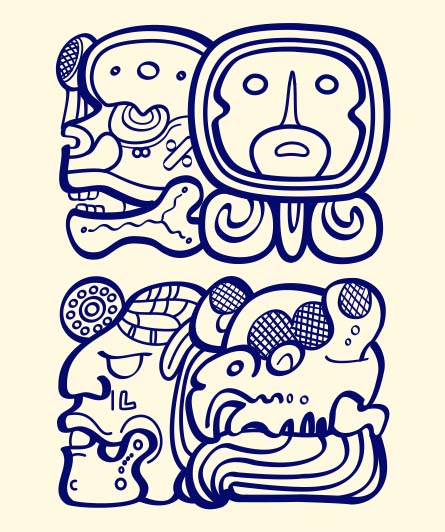
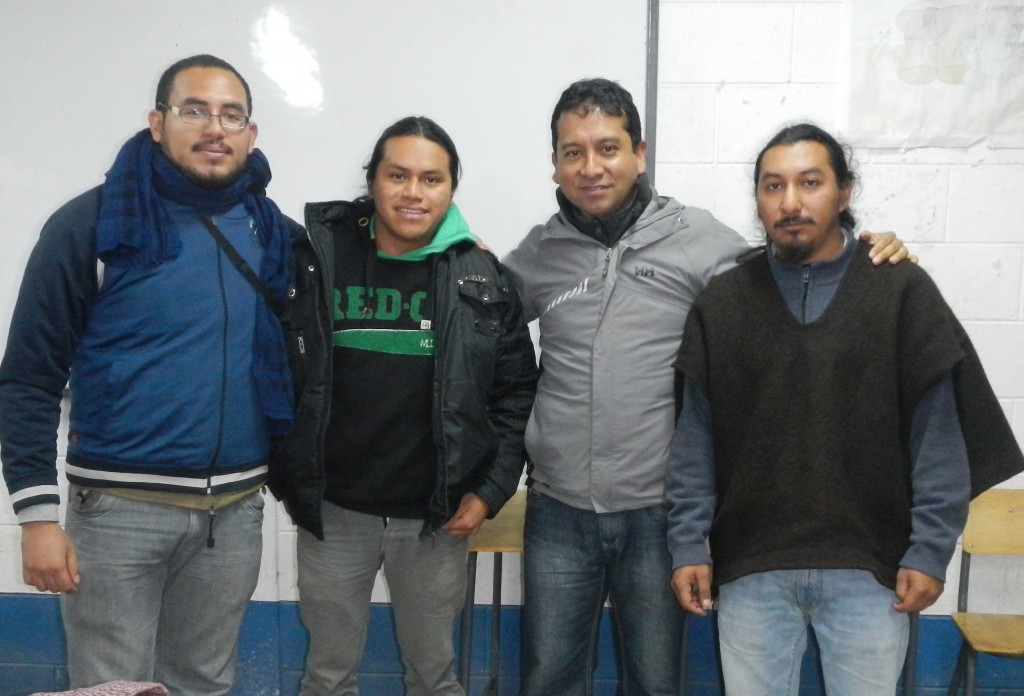


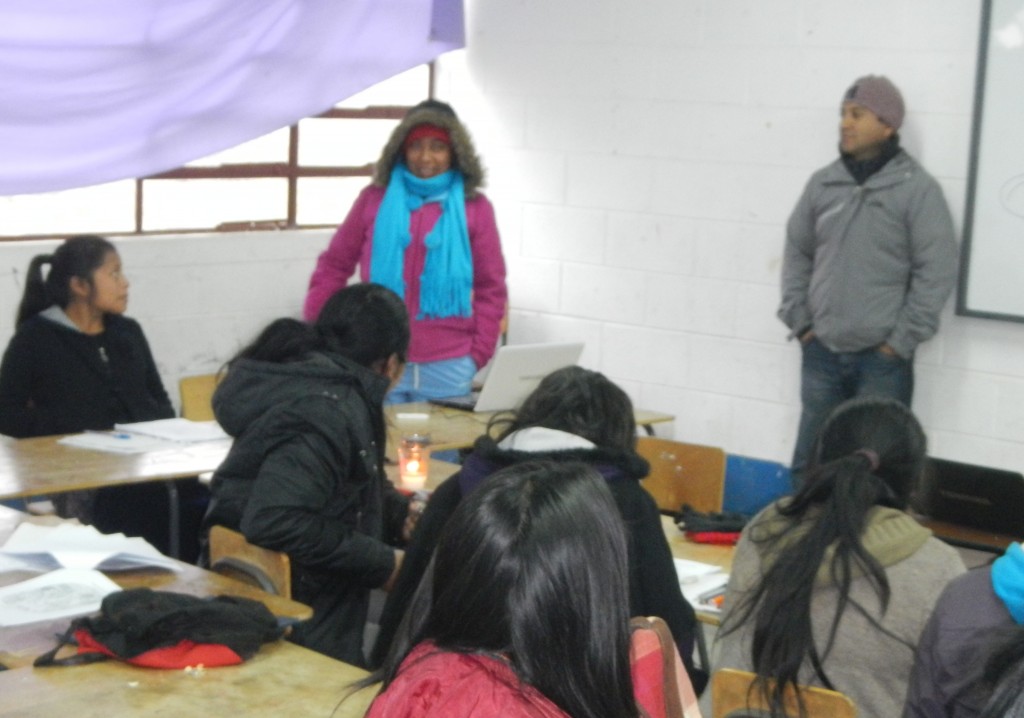
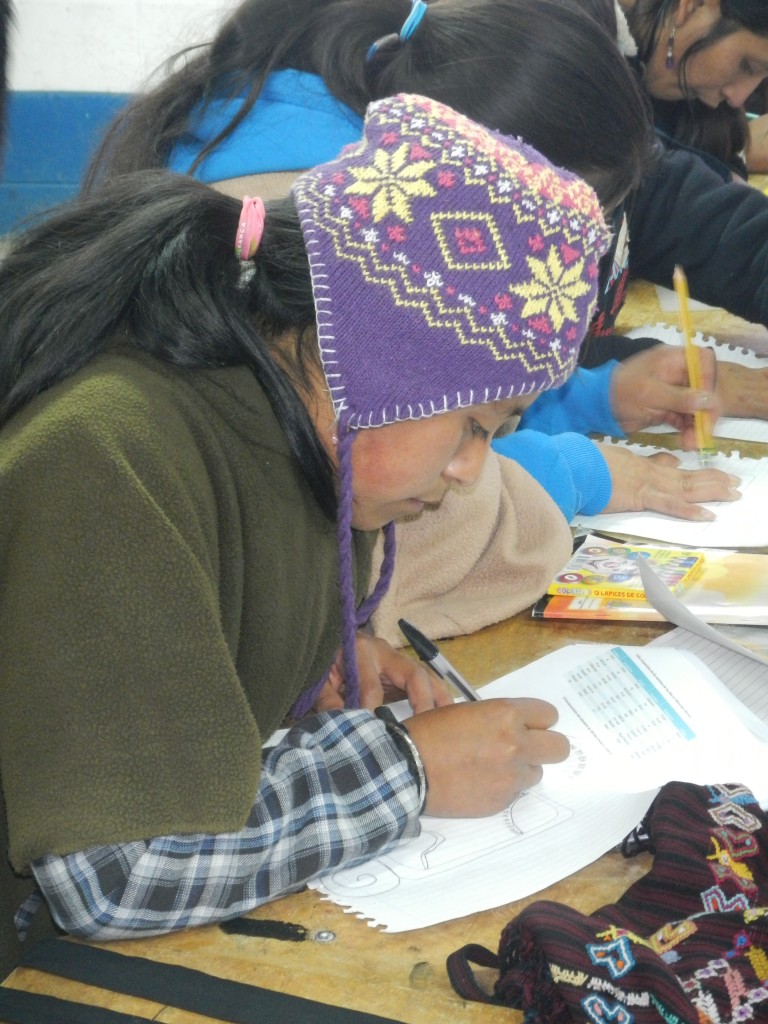
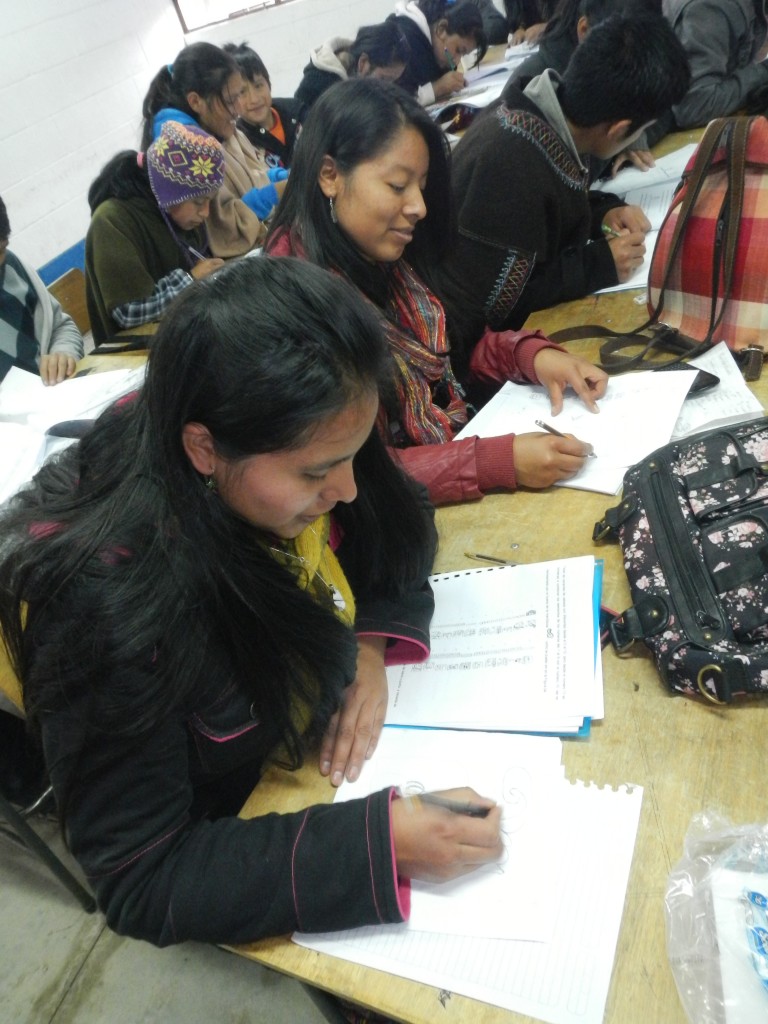

Felicitaciones, por los conocimientos compartidos a las nuevas generaciones.